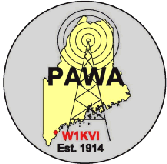

It's never been so easy to get into ham radio. All ham radio operators must be licensed before they can legally operate. This differs a great deal from the CB (i.e. truckers and FRS (i.e. dimestore walkie talkie) services which require no licenses.
Amateur radio operators must be licensed because they are given transmitting privileges on a wide variety of frequencies and are allow to use just about any equipment imaginable, even home built radios. Amateurs are allotted not single specific frequencies but usually whole ranges (bands) of different frequencies to operate on. These frequencies and methods of transmission are are specified by FCC rules and so it is therefore necessary to be generally familiar with your operating limitations in order to transmit lawfully.
In order to qualify for an amateur radio license, you must pass certain tests to determine that you have the required knowledge. Fortunately, the tests are not terribly difficult for most people. There are three license levels (known as classes) where each class grants greater privleges to the individual. There is a single written test for each license class.
The license classes are:
Technician Class - this is the entry level license. It gives privileges on all amateur frequencies above 50 Mhz and is the most popular. It requires only a written test.
General Class - this is the mid-level license. It enables privileges on most amateur frequencies below 50 Mhz and includes global HF (shortwave) communications. It has its own written test.
Extra Class - this is the highest level license. It grants privileges on all amateur frequencies. It has its own written test and requires that you also have passed all of the Technician and General class written tests.
Okay, so where do I start?
This part is easy. The first thing you should do is obtain the home study materials to prepare you for the test. These will give you the background that you'll need to understand the gist of what the tests are about. You can even order study materials online! When you're ready to take the test, you should then locate the nearest license exam opportunity in your area. The ARRL website provides a searchable index where you can find the test session nearest you. That's it! It typically takes about 2 weeks for your new license to arrive in the mail and you're ready to go! In the meantime, you can look into local clubs and ham radio organizations to find out more about what's going on in your area.
Study Guides
To find study guides for becoming a ham or upgrading your license go to one of the following sites:

Bryce Rumery, K1GAX
by email to [email protected] or by phone to (207) 415-0498
